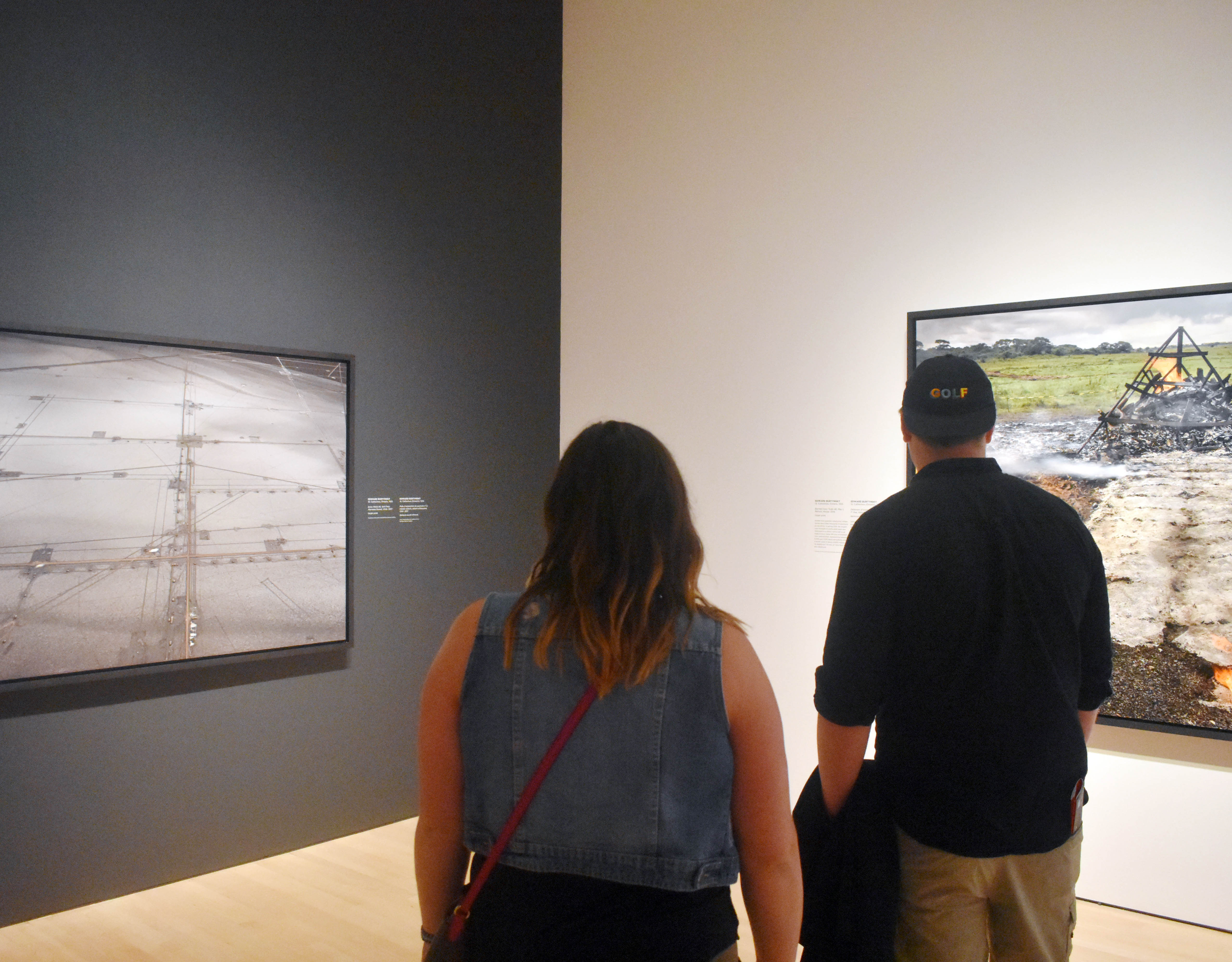The National Gallery’s exhibition, Anthropocene: The Human Epoch, has become the target of criticism by a socialist group in Ottawa.
The group says the exhibit puts the blame of a dying planet on individuals instead of corporations. Anthropocene was released last month and showcases humans’ toll on the earth through a fusion of photgraphy, video and scientific research.
The exhibition, which features the works of Canadian photographer Edward Burtynsky and videographers Jennifer Baichwal and Nicholas de Pencier, will be in Ottawa until mid-February.
While the exhibit has been generally well received in the city, some groups in Ottawa disagree with how it approaches the issue of climate change.
The Ottawa New Socialists is one of these groups. The group held an exhibition walkthrough of Anthropocene on Oct. 13, followed by a discussion to provide information and context to the public about the Anthropocene period that they felt the exhibition was missing.
Ian Angus, author of Facing the Anthropocene: Fossil Capitalism and the Crisis of the Earth System, spoke at the event. For him, the National Gallery’s exhibition comes at the perfect time, coinciding with the UN Intergovernmental Panel on Climate Change’s (IPCC) recent report, warning that the current rate of climate change could have catastrophic results as early as 2030.
According to Angus, climate change is ultimately the result of society being trained to consume much more than we need. He said turning this mentality around would call for a serious shift of ideology around the world.
“The destruction of the environment isn’t some kind of accident or you know, someone made a mistake somewhere,” Angus said, “It’s based on the way the world is organized and that way is a capitalist society.”
Angus identifies his political views as being “eco-socialist,” acknowledging that some people may attach negative connotations to the word. But to him, it simply means he sees a need for radical change.
“My view is that the only way that we can resolve not just climate change but a whole host of other environmental issues, with climate change being the biggest, is by eliminating capitalism as the basis of our economy.”
Although Angus praises the exhibition for sparking a discussion of an important issue not widely talked about within the art world, he said more information was needed to explain the context of the photographs to the average viewer.
“It’s beautifully done. In fact, I almost have negative feelings about it because it shows horrible things so beautifully—some of those pictures of waste and destruction are such beautiful pictures that it’s almost frightening,” he said, “what you see at the National Gallery is a piece of the Anthropocene, not the whole picture.”
Sandra Hawkins, an Ottawa-based contemporary mixed media artist based in Ottawa, led the post-walkthrough discussion into a new path—commenting on how books about climate change were being sold at the event and expressing a need to acknowledge that art, although it can be informative, also contributes to consumer culture.
“The commodification of anything cannot be avoided, including the commodification of climate change,” Hawkins said, “because we are living within a capitalist system.”
Hawkins works in various mediums and her work often focuses on environmental issues. “As someone who wants to get exhibitions, right away, you’re commodifying your work and I’m not saying that’s bad—I’m saying that’s the reality, and we have to talk about that,” she said.
Hawkins, like Angus, appreciated the exhibition, but felt that it needed more context in order for the full explanation of the problem of climate change to be conveyed. She said she wonders whether the series’ theme of the exhibition is being done justice if it is shown within an art context.
She said that the exhibit just might not belong in the National Gallery at all.
“Is this exhibition really about an aesthetic discourse that is contributing to our better understanding of art because it’s in the context of the National Gallery?” she said, “Or should it be located in the Museum of Nature, or the Museum of History?”
Andrea Kunard, curator of Anthropocene, responded to these criticisms in an email.
“It is up to the visitors to decide if or how they want to educate themselves on the many different themes the show presents,” she said.
Kunard also noted that the exhibition does include an interactive area that includes lectures and talks with scientists, and other experts that explore the issues raised in the exhibit.
Kunard also notes that Anthropocene co-creator Edward Burtynsky said, “the work asks more questions than it answers; which is what artists are there to do.”
Photo by Graham Swaney






